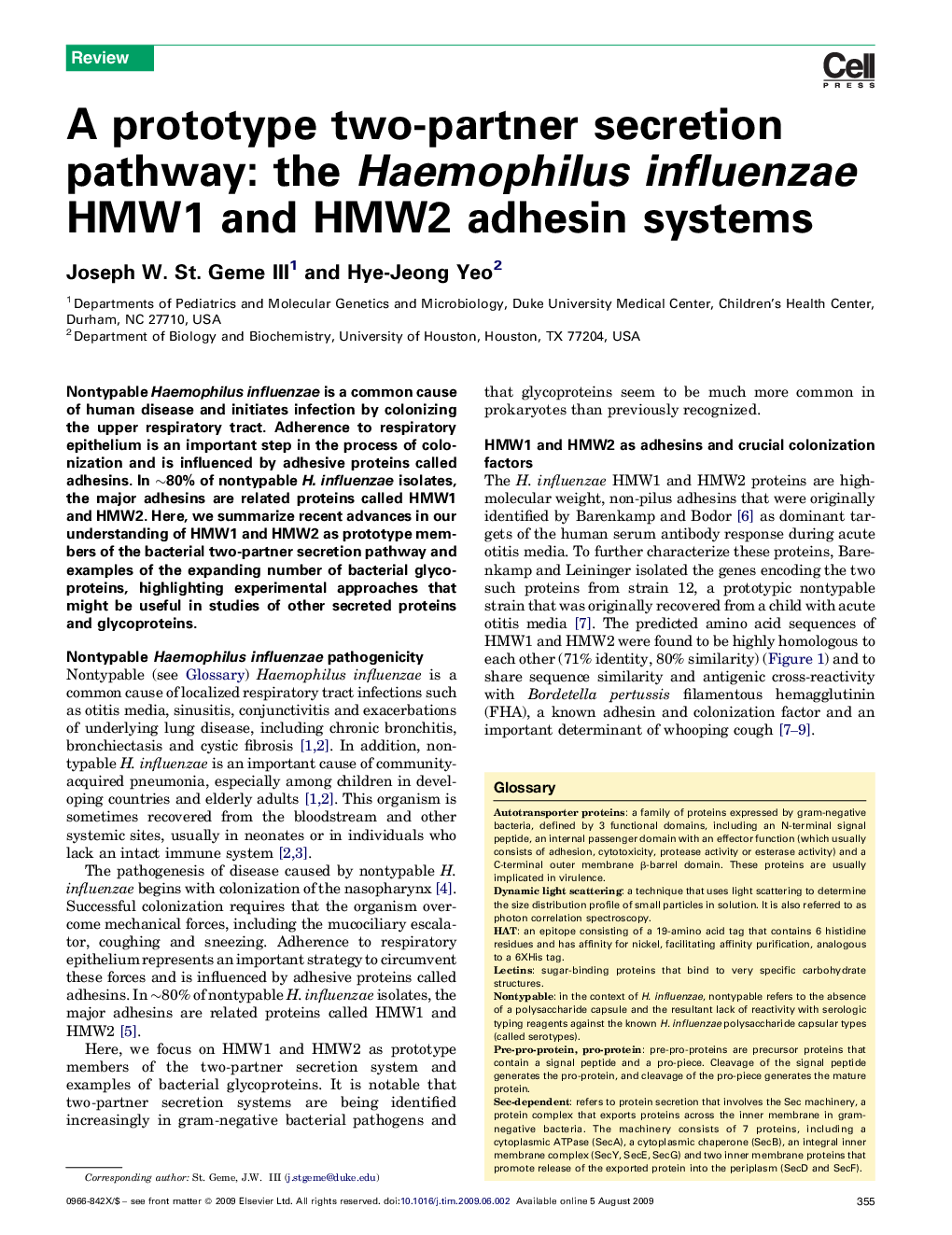| Article ID | Journal | Published Year | Pages | File Type |
|---|---|---|---|---|
| 3422431 | Trends in Microbiology | 2009 | 6 Pages |
Abstract
Nontypable Haemophilus influenzae is a common cause of human disease and initiates infection by colonizing the upper respiratory tract. Adherence to respiratory epithelium is an important step in the process of colonization and is influenced by adhesive proteins called adhesins. In ∼80% of nontypable H. influenzae isolates, the major adhesins are related proteins called HMW1 and HMW2. Here, we summarize recent advances in our understanding of HMW1 and HMW2 as prototype members of the bacterial two-partner secretion pathway and examples of the expanding number of bacterial glycoproteins, highlighting experimental approaches that might be useful in studies of other secreted proteins and glycoproteins.
Related Topics
Life Sciences
Immunology and Microbiology
Microbiology
Authors
Joseph W. St. Geme III, Hye-Jeong Yeo,
